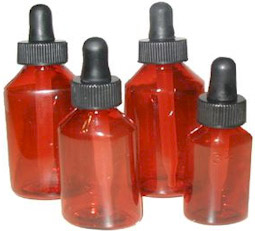LIQUID CREATINE SERUM VS. MONOHYDRATE POWDER

If you’ve read through my other articles supplementation articles, then you already know just how highly I think of creatine.
Creatine has been research proven time and time again to have highly positive effects in bodybuilders and athletes through its effects on strength enhancement, muscle cell volumization and lactic acid buffering.
Creatine is traditionally sold in powdered form as creatine monohydrate. Several other forms have been popping up over the years, including creatine ethyl ester, creatine hydrochloride and creatine citrate.
Another aggressively marketed form is “liquid creatine serum”, a “100% stable” form of creatine sold in a fancy dropper bottle in various different flavours.
Creatine serum is often marketed as being superior to powdered monohydrate in a variety of ways.
It’s claimed to be more absorbable, more stable and more effective in the body. On top of this, liquid creatine serum manufacturers often portray powdered monohydrate as having a variety of negative attributes that their serum supposedly does not possess.
In order to make this review as simple and straightforward as possible, I’ll simply list the main claims that are commonly made about liquid creatine serum along with a quick analysis of each…
Liquid Creatine Serum Claims Debunked
Claim #1: Liquid creatine serum is absorbed faster and more efficiently than powdered creatine monohydrate.
Truth: First of all, I’m not aware of any actual studies or evidence that show that liquid creatine serum absorbs at a faster rate than regular powdered creatine does. Powdered creatine is normally dissolved in liquid first before taking it, so there should theoretically be no real difference between the two.
Even if this claim were true, it still wouldn’t matter anyway since creatine absorption rate is irrelevant. Creatine has no immediate, acute effects and having your creatine absorb at a faster rate doesn’t give you any real advantage.
When you supplement with creatine consistently for a few weeks, your muscles will become fully saturated and that creatine will always be available for use any time you train.
Claim #2: Liquid creatine serum does not cause bloating like regular creatine monohydrate.
Truth: This is a great example of where a supplement company simply makes up a claim out of thin air about their competitor’s product in order to make their brand seem superior.
Regular creatine monohydrate does NOT cause bloating or “puffy” looking muscles like many companies claim. It does increase the body’s overall retention of water, but that water is intra-cellular and not subcutaneous. In other words, creatine pulls more water directly into the muscle cell without storing any additional water directly beneath the skin. If anything, creatine monohydrate will cause you to appear harder and more defined.
If a company claims that their form of creatine “does not cause bloating”, you can be sure that it’s a totally baseless claim.
Claim #3: Due to its rapid absorption rate, a loading phase is not required when using liquid creatine serum.
Truth: There is no need to load with any form of creatine, powdered or not. Creatine loading is simply an optional method that allows you to achieve the benefits of creatine in a shorter period of time.
If you were to consume 3 grams of creatine daily with no loading phase, your body would reach the same saturation point within about 3 weeks.
Another totally nonsensical claim.
Claim #4: Liquid creatine serum is “easy on the kidneys”.
Truth: Of course it is, because there has never been any demonstrated link between creatine of ANY form and adverse effects on kidney function or overall health.
Creatine serum is easy on the kidneys, and so is powdered monohydrate.
So much for that.
It’s pretty obvious that the makers of these liquid creatine serum products are only interested in making a quick buck rather than genuinely helping you reach your goals. All of the claims made about liquid creatine serum are not based on anything but fluff.
But even if the claims about creatine serum aren’t exactly true, is it still a reasonable alternative to the powdered form?
No, and the simple reason is the insane cost per serving.
Because the companies selling liquid creatine serum promote it as being “more absorbable” than regular creatine powder, they’re able to get away with using a ridiculously small amount of actual creatine in their bottles. It’s a great marketing tactic, but a far from great tactic for the consumer.
One of the top selling liquid creatine serum products out there right now gives you 250mg of creatine per serving (about 1/12th of the 3000mg amount most people will need for full effects) with 30 servings per bottle. In other words, an entire bottle contains 7.5 grams of total creatine.
Oh, and it’ll cost you 30 bucks.
Don’t worry, that’s only around 8-10x the cost of regular creatine monohydrate for something equally or less effective.
Unless the “delicious fruity taste” of this stuff is worth 30 bucks a bottle to you, do what any half-intelligent expert would recommend and stick to products that use standard creatine mononydrate.
While consuming creatine in liquid form might be okay under the proper circumstances, the extremely small bottle and serving size of liquid creatine serum products renders them almost entirely useless.
If you found this article helpful, make sure to sign up for your FREE custom fitness plan below...




